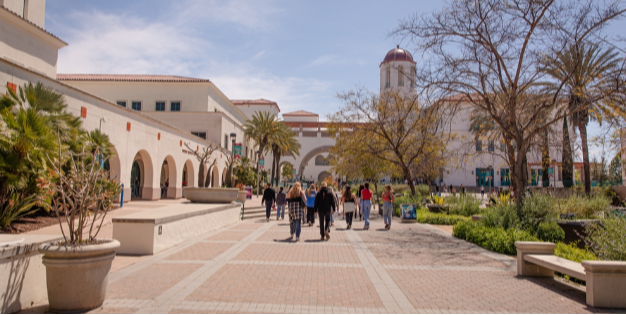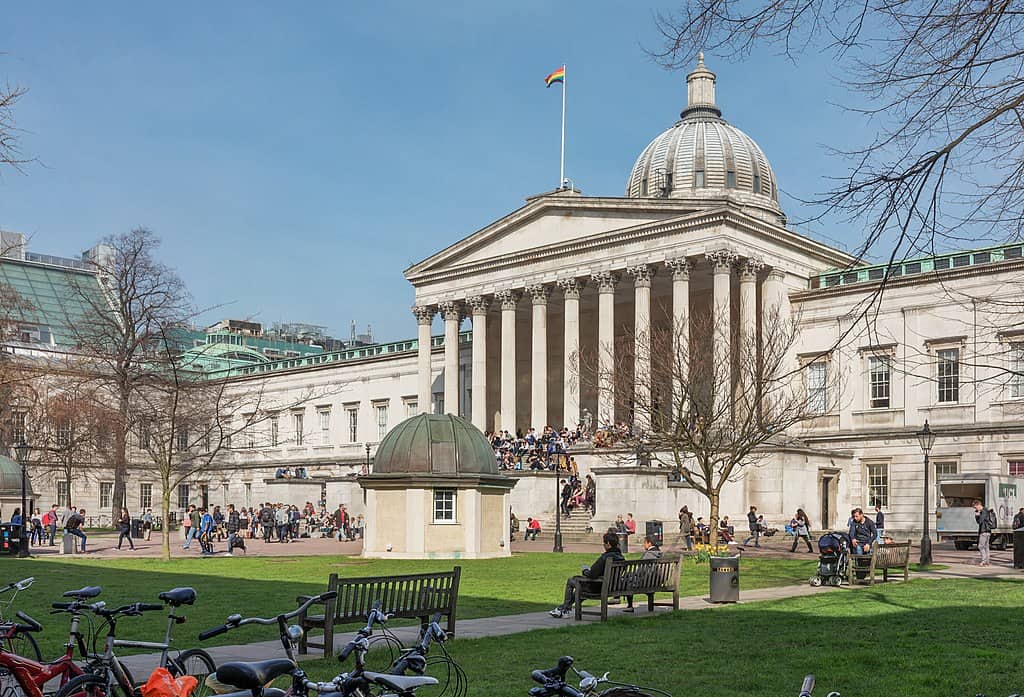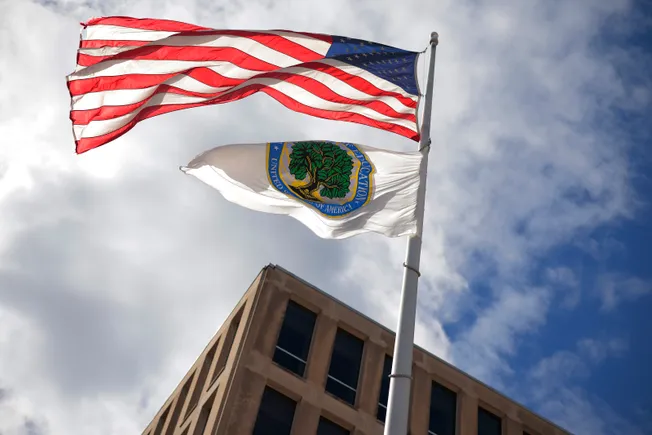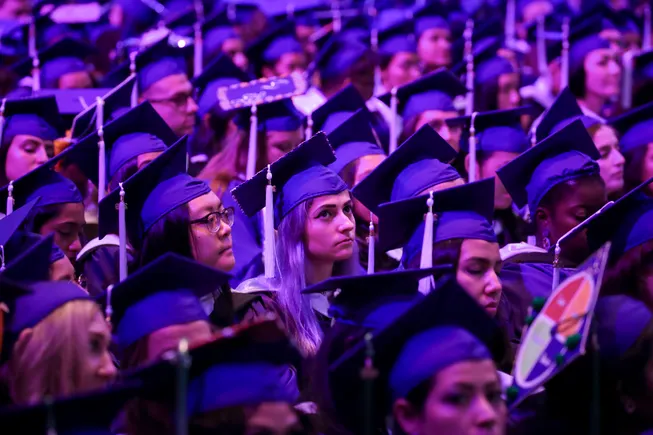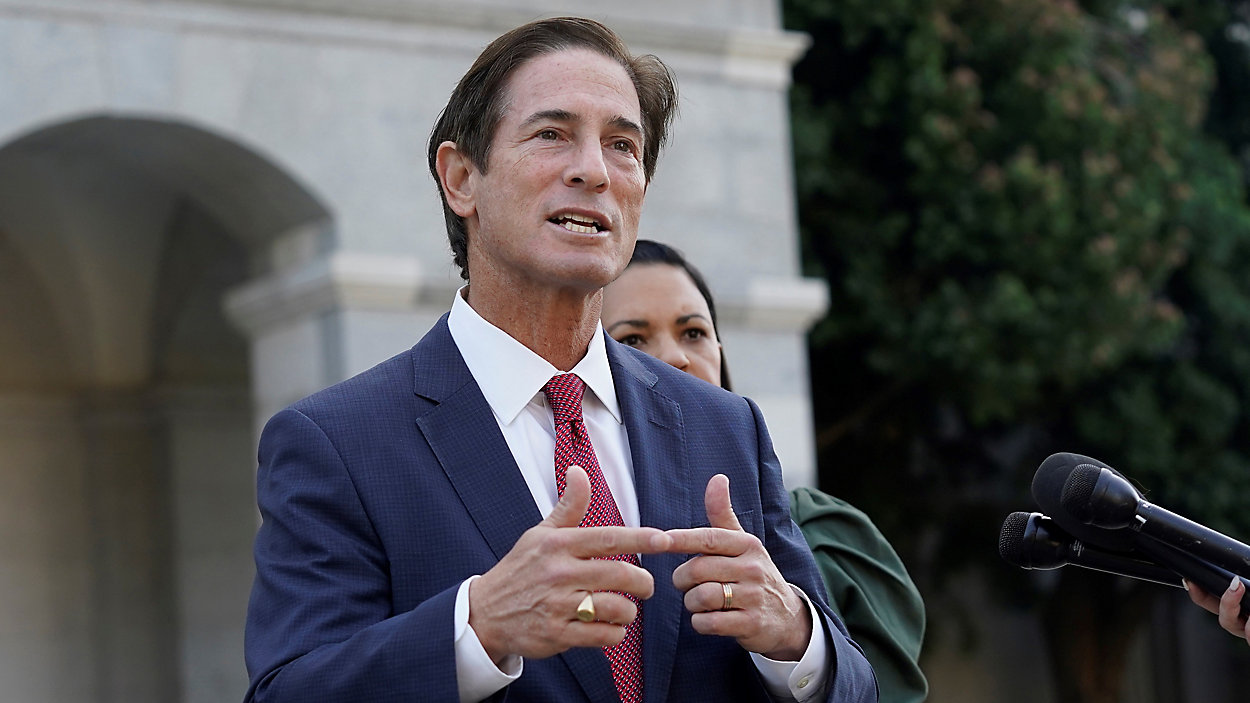bluestork/Shutterstock
“Campus to Community: Stories of Impact in Higher Education” is a series I’m writing to explore how colleges and universities show up for the world beyond their gates, and what that reveals about who we are and who we’re becoming. I will highlight higher education’s civic purpose through stories about the programs, partnerships, and people that connect campus to community.
In May 2025, a significant milestone took place inside Centinela State Prison in Southern California: twenty-seven incarcerated students earned their bachelor’s degrees from San Diego State University (SDSU), becoming the first cohort of graduates of the university’s Valuing Incarcerated Scholars Through Academia (VISTA) program.
The moment marked more than just the completion of a degree; it symbolized a broader national shift in how public institutions of higher education are reimagining their reach, responsibilities, and role in the movement for justice.
An Initiative Rooted in Justice and Creative Expression
Launched in 2023, the SDSU-VISTA program offers incarcerated students a pathway to aBachelor of Arts degree (BA). The first cohort of graduates received a degree in Interdisciplinary Studies which integrated communication, journalism & media studies, and art & design. Practically, this mix of disciplines allows students to engage in critical thinking and storytelling. Now, the current cohort of students is working towards a BA in journalism.
“We chose these degrees for the skills and knowledge students would gain,” said Annie Buckley, director of SDSU’s Institute for the Arts, Humanities, and Social Justice and founding director of both VISTA and Prison Arts Collective (PAC). Buckley was inspired to bring the idea of a BA in prison to SDSU after more than a decade with PAC, which has brought the transformative power of the arts to over 9,500 incarcerated people in California since 2013. When developing the BA degree, she collaborated with SDSU colleagues to focus on fields that would provide meaningful career pathways with fewer barriers to entry for formerly incarcerated graduates.
Designing a Degree for Inside Spaces
Building a college degree program inside a prison presents a unique set of logistical and pedagogical challenges, including tight technology restrictions, inconsistent classroom access, and rigid security protocols. It requires flexibility and imagination. SDSU VISTA team members treat these obstacles as opportunities to build a new kind of academic infrastructure.
SDSU’s VISTA courses are delivered in person at Centinela State Prison by faculty who travel to the site each week. Students are issued California Department of Corrections and Rehabilitation (CDCR) laptops and complete assignments through SDSU’s learning management system, Canvas. While internet access is restricted, Canvas allows students to access course materials, submit work, and receive feedback, offering a digital classroom within prison walls. The program follows SDSU Global Campus’s accelerated calendar, which allows students to make steady progress toward degree completion.
Eligibility for the program is selective. Priority goes to students with an Associate Degree for Transfer (ADT), followed by those with an associate degree and California State University GE certification. In 2024, a second degree in journalism launched with a tighter focus on professional writing and reporting. In both tracks, students develop practical skills in storytelling, media production, and visual communication, culminating in capstone projects ranging from podcasts to publications and advocacy pieces.
Program leaders and faculty meet regularly with Centinela’s education team and CDCR staff to coordinate access, adjust schedules, and resolve implementation challenges. SDSU is also in conversation with other higher education-in-prison programs across California to share tools and troubleshoot persistent barriers, including delayed mail, limited printing resources, and occasional lockdowns. Faculty often respond with low-tech solutions such as analog course packets, printed lectures, and extended deadlines. “Those challenges are met with collaboration and creativity,” Buckley noted.
The program’s success is built on this foundation of cross-sector partnership. Co-developed by leadership from theCollege of Professional Studies and Fine Arts and theInstitute for the Arts, Humanities, and Social Justice (and administered through SDSU Global Campus), the VISTA program reflects what’s possible when universities approach access as both policy and practice.
Early Impact and Long-Term Goals
Though only two years old, VISTA’s impact is already visible — academically, personally, and institutionally. “Students share that this degree impacts not only their own lives and trajectories, but their families and communities as well,” said Buckley. “SDSU is not only fostering academic achievement but also contributing to rehabilitation and personal transformation.”
That transformation is visible in students like Ruben Vargas, one of the inaugural graduates at Centinela State Prison.
“Obtaining my bachelor’s degree means that I will have a new opportunity in life once I earn my freedom,” Vargas said in an interview with SDSU News Center. “It also allows me to set forth an example to my children — that in spite of any circumstances that life finds you in, if you put in the hard work and change your perspective, you will persevere. Earning my bachelor’s degree renewed my confidence, my sense of self, and transformed my outlook on life.”
For students, the degree is both a credential and a lifeline.
National research reinforces what SDSU is seeing on the ground. A 2013 RAND Corporation study found that incarcerated individuals who participate in postsecondary education programs are 43% less likely to recidivate than those who do not. Additional studies suggest that earning a bachelor’s degree reduces recidivism to just 5.6%, underscoring the long-term societal impact of programs like VISTA.
To build on this early momentum, SDSU secured a $1 million grant from the Mellon Foundation, which will support the program’s next phase of growth. The funding is helping to expand curriculum offerings in the humanities and deepen student support through new faculty development and instructional tools. “With the Mellon Foundation grant, we’re positioned to expand both in terms of scale and curricular depth,” Buckley said. “The funding allows us to improve access to learning opportunities, strengthen faculty capacity, and refine a model that can be replicated elsewhere.”
In addition to academic expansion, the VISTA team is conducting both formal and informal assessments to better understand student goals, barriers, and outcomes. They are also developing a best-practices toolkit for holistic learning in higher education programs in prisons.
This forward-looking strategy ensures that SDSU-VISTA is a living, evolving model for how public universities can meet learners where they are and support their full potential.
Implications for Higher Education
As more institutions reexamine their role in promoting justice, supporting incarcerated learners becomes a moral imperative and a strategic opportunity. It’s about recognizing that education is a right, and that access to its liberatory power should not be limited by circumstance or past mistakes. It’s about confronting the inequality that has, for too long, restricted opportunity for too many. It’s about redefining who gets to be a student and where learning happens. VISTA, and programs like it, are vital because they extend education’s reach to the most uncommon places and demonstrate how its power transforms lives, families, and communities alike.

